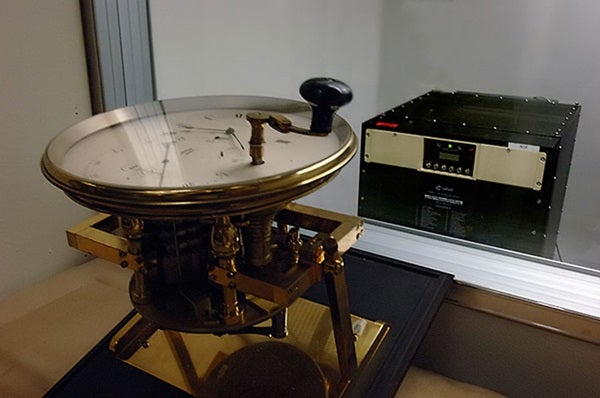On December 31, 2008, a “leap second” will be added to the world’s clocks at 23 hours, 59 minutes, and 59 seconds Coordinated Universal Time (UTC). This corresponds to 6:59:59 p.m. Eastern Standard Time when the extra second will be inserted at the U.S. Naval Observatory’s Master Clock Facility in Washington, DC. This marks the 24th leap second to be added to UTC, a uniform time-scale kept by atomic clocks around the world since 1972.
Historically, time was based on the mean rotation of Earth relative to celestial bodies and the second was defined in this reference frame. However, the invention of atomic clocks defined a much more precise “atomic time” scale and a second that is independent of Earth’s rotation. In 1970, an international agreement established two time scales: one based on Earth’s rotation and one based on atomic time. The problem is that Earth’s rotation is gradually slowing down, which necessitates the periodic insertion of a “leap second” into the atomic time scale to keep the two within 1 second of each other. The International Earth Rotation and Reference Systems Service (IERS) monitors the difference in the two time scales and calls for leap seconds to be inserted or removed when necessary. Since 1972, leap seconds have been added at intervals varying from 6 months to 7 years, with the last being inserted December 31, 2005.
The U.S. Naval Observatory is responsible for the precise determination and dissemination of time for the Department of Defense and maintains its Master Clock. The U.S. Naval Observatory, together with the National Institute of Standards and Technology, determines time for the United States. Modern electronic navigation and communications systems depend increasingly on the dissemination of precise time through such mechanisms as the Internet-based Network Time Protocol and the satellite-based Global Positioning System.
The U.S. Naval Observatory is the largest single contributor to the international time scale, which is computed in Paris, at the International Bureau of Weights and Measures. The number of atomic clocks operated by the Observatory and the fidelity to which they are maintained is why they have international prominence in atomic timekeeping.










